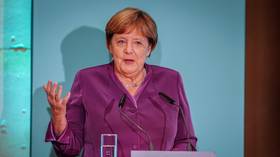Satellite crash raises growing concern over space junk
Russia is monitoring the wreckage of two communications satellites that collided in space above Siberia.
NASA says neither the earth nor the International Space Station are at risk from the debris of the Russian and American satellites. But what caused the accident and who’s to blame?
The accident occurred on Tuesday, creating a massive explosion with much debris scattering through space. It has become the first-ever collision involving two orbiting satellites.
Russian scientists are still guessing about what could have been behind the collision, but one thing they’re sure of is that the responsibility rests with the Americans. Out of the two satellites whose orbits crossed some 800 kilometres above Siberia, only the U.S. satellite was in service and could be manipulated from the ground.
Nail Bakhtigarayev from the Institute of Astronomy said:
“The Russian satellite, which was previously used for military purposes, had been long decommissioned. It didn’t even have an engine, so its orbit couldn’t have been changed from Earth.”
The privately-owned American satellite – Iridium-32 – was launched in 1997 to enhance satellite telephone networks. The Russian Cosmos-2551 satellite was launched in 1993 and, according to NASA and Pentagon officials, had been non-operational for about 10 years.
According to NASA, the crash debris creates some small risk to the ISS, which is located about 400 kilometres below the orbit where the accident took place. However, it will take several weeks before the full magnitude of the collision is determined.
Danger of space junk
Currently there are about 12,000 artificial objects in space, including some 800 operating spacecraft.
There have been minor collisions in space before, but the scale of this latest crash is unprecedented. The satellites – one weighing about a tonne, the other almost 600 kilogrammes – crashed at a speed of 670 km per minute. Officials said the accident will be investigated and analysed.
While space experts ruled out the risk of immediate damage, the incident highlighted the larger problem of a highly congested earth orbit.
“This is a serious problem that gets worse by the year. The amount of space junk is increasing. Eventually it will clutter Earth’s orbit to such a degree that active satellites would only be able to operate for short periods of time without fear of collision,” Nail Bakhtigarayev said.
Charles Vick, a space expert at globalsecurity.org, thinks an international standard for disposing of space debris should be created.
“It certainly is likely to happen again since we underestimated the potential of this type of accident, but we really shouldn’t have done so,” he said.
The larger question, he asked, is “why don’t we have an international standard for older, defunct spacecraft that still have time before they deteriorate? Perhaps we should have an international standard that old satellites must have a de-orbit capability at the end of their life span in order to prevent this kind of thing…”
Space collision debris to orbit Earth for millenia
The chief of Russia's Mission Control says clouds of debris from the collision between U.S. and Russian communications satellites will circle Earth for thousands of years and threaten numerous satellites.
Vladimir Solovyov says the crash occurred in an orbit crowded by satellites from many nations.
Solovyov told reporters Friday that numerous fragments left by Tuesday's collision could stay in orbit for up to 10,000 years. He said that even tiny fragments could pose a serious threat to spacecraft made of light alloys.
No one has any idea yet exactly how many pieces of space junk the collision created. Space experts said the collision created hundreds, maybe thousands, of fragments.












